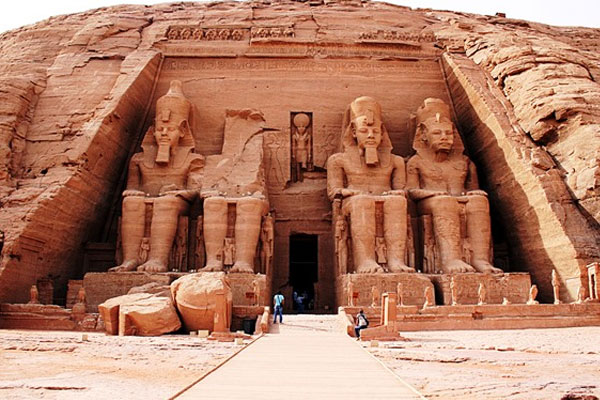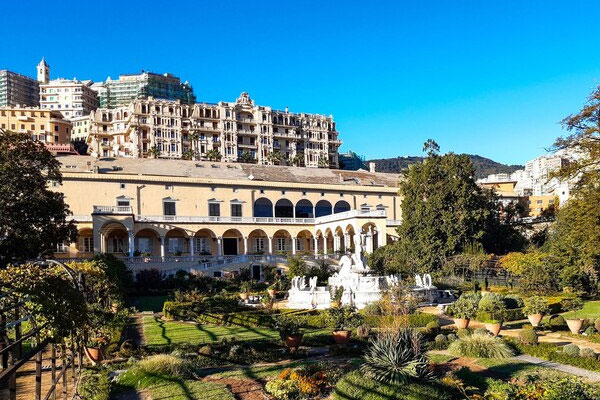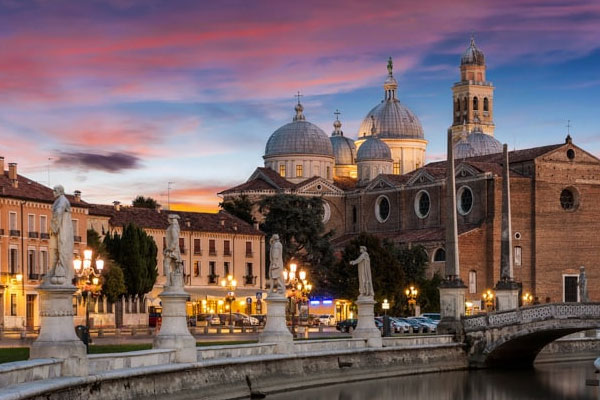Travel
Temple of Abu Simbel in Egypt

Temple of Abu Simbel in Egypt
Let’s explore the Temple of Abu Simbel in Egypt :
The Abu Simbel Temple in Egypt stands as an enduring testament to the grandeur of the ancient world, particularly the era of Pharaoh Ramses II. This world-renowned landmark, recognized by UNESCO and meticulously preserved, beckons travelers on the western bank of the Nile River, nestled in the Nubian Valley approximately 280 kilometers south of Aswan.
From its awe-inspiring architecture to the intriguing optical phenomenon it unveils, Abu Simbel captivates visitors with its beauty, power, and the enigmatic allure of Ancient Egypt.
Why You Should Visit the Abu Simbel Temple in Egypt
The Abu Simbel Temple complex, consisting of two magnificent structures dedicated to Pharaoh Ramses II and his beloved wife Nefertari, unfolds a narrative of the ruler’s masculinity, military prowess, love for his spouse, and reverence for the deities. Carved into a colossal 100-meter sandstone rock, the temples showcase the astonishing scale of ancient construction. The colossal statues of the pharaoh at the entrance stand as imposing guardians, inviting exploration.
One of the compelling reasons to visit Abu Simbel is the mesmerizing optical phenomenon that occurs twice a year. During these significant days, the rising sun illuminates the sculptures of gods and the pharaoh inside the temple, creating a breathtaking spectacle. Legend has it that this phenomenon aligns with the days of Ramses II’s coronation and birth, adding a touch of mystique to the experience.
History of the Abu Simbel Temple
The Abu Simbel Temple complex traces its roots back to the reign of Pharaoh Ramses II (1279-1213 BC), commemorating the Battle of Kadesh with the Hittites. This battle, marked by an unprecedented truce, led to the construction of the temples as a divine tribute to the gods who aided Ramses II.
The temples initially faced challenges, being buried under sand until the 18th century. Later, the looming threat of flooding necessitated a massive relocation effort, supported by UNESCO between 1964 and 1968.
Construction of the Abu Simbel Temple
The construction of the Abu Simbel Temple was a colossal endeavor that spanned two decades. Comprising two separate buildings, the Large Temple for Pharaoh Ramses II and the Small Temple for Queen Nefertari, the complex is a marvel of ancient architecture. The relocation, prompted by the construction of a dam on the Nile, involved cutting the rock temple into massive blocks, which were then painstakingly reassembled in a new location.
The Great Temple of Ramses II
The Great Temple, dedicated to Ramses II, is a masterpiece showcasing the ruler’s might. Carved from sandstone rock, it features four halls with a triangular layout. The colossal statues of Ramses II at the entrance, reaching a height of 20 meters, exude power and grandeur. The intricate drawings and ornaments narrate historical events, particularly the Battle of Kadesh, while the inner chambers reveal the deification of Ramses II and his courageous feats in battles.
The architectural brilliance of the Great Temple is further accentuated by the annual solar alignment. During specific days in October and February, sunlight penetrates the sanctuary, casting a magical glow on the statues, except for the god Ptah. This optical illusion lasts for just over 20 minutes, adding a celestial touch to the temple’s allure.
The Small Temple of Nefertari Merenmut
Adjacent to the Great Temple stands the Small Temple, dedicated to Queen Nefertari. Decorated with colossi depicting the royal couple, the temple celebrates the love and devotion between Ramses II and Nefertari. The interior paintings portray the queen surrounded by gods, and the dark blue ceiling simulates a starry sky. In the burial chamber, once housing Nefertari’s scarlet granite sarcophagus, drawings accompany her journey to the afterlife.
Ramses II’s Role in Temple History
The construction of the Abu Simbel Temple immortalizes Ramses II’s triumph in the Battle of Kadesh, a significant achievement for ancient Egypt. The pharaoh, proud of his victory, emphasized the importance of divine figures in his life through intricate depictions and inscriptions within the temple.
Abu Simbel – UNESCO Cultural Heritage
Recognized by UNESCO, the Abu Simbel Temple complex stands as a crucial cultural heritage site, representing a pivotal period in Ramses II’s reign. The relocation project, undertaken with UNESCO’s support, attests to the global significance of this architectural wonder.
Sun Festival in Abu Simbel
Twice a year, on October 22 and February 22, the Sun Festival in Abu Simbel attracts eager crowds. At sunrise, tourists gather to witness the extraordinary solar alignment, illuminating the Great Temple’s sanctuary. The event lasts for about 18 minutes, captivating spectators with its celestial beauty. Local residents contribute to the festivities, sharing legends and enhancing the experience with entertainment programs.
Interesting Facts about Abu Simbel Temple
The Abu Simbel Temple harbors mysteries that continue to intrigue scientists. Some noteworthy facts include the identical size of the figures of Ramses II and Nefertari on the Small Temple’s façade, a rarity in ancient depictions. Additionally, proposals were considered to create a “flooded monument” rather than relocating the temples during the dam construction.
Tours of Abu Simbel Temple in Egypt
Exploring the Abu Simbel Temple is often part of a two-day excursion. The journey commences with an exploration of Aswan’s attractions, including the monumental dam and the Friendship Monument commemorating Soviet-Arab relations. The second day is dedicated to the awe-inspiring visit to the temple complex.
Ticket Prices to Abu Simbel Temple in 2024
Entrance fees to Abu Simbel are applicable, with adult tickets priced at 255 Egyptian pounds (approximately $10). Child and student tickets are available at half the price. Separate fees for photography are charged, allowing visitors to capture memorable moments within the temple.
Getting to Abu Simbel Temple in Egypt
Accessing Abu Simbel involves transfers, often beginning with flights to Aswan from major cities. Subsequent travel to Nubia can be facilitated by buses or Nile cruise ships. The approximately 300-kilometer journey from Aswan to Abu Simbel offers an opportunity to appreciate the historical richness of Ancient Egypt.
Conclusion
In conclusion, the Abu Simbel Temple stands as a magnificent portal to ancient times, inviting travelers to unravel the tales of Ramses II and the splendors of Egyptian civilization. Its colossal statues, intricate carvings, and the enchanting solar alignment make it a must-visit destination for those seeking a profound connection with the wonders of the past.
Travel
What to do in Genoa – Travel To Genoa

What to do in Genoa – Travel To Genoa
What to do in Genoa :
Genoa, often overshadowed by its more popular Italian counterparts, holds a wealth of treasures waiting to be discovered. While it may not immediately come to mind when planning an Italian adventure, this maritime city boasts a rich history as the former capital of a powerful republic and the birthplace of renowned figures like Christopher Columbus and Niccolo Paganini.
Despite its lesser-known status, it offers a unique charm and a plethora of attractions that appeal to curious travelers. So, what makes this city special, and what should you do when you visit?
Getting to Genoa
Reaching Genoa is easier than you might think. During the summer months, S7 Airlines offers direct flights, while various European carriers operate year-round flights. Alternatively, you can fly to Milan and take a short train ride to Genoa, which is only about an hour and a half away. Train travel is also an option, with direct routes available from cities like Moscow. Whether you choose to fly or take the train, Genoa is well-connected and easily accessible.
Where to Stay in Genoa
Choosing accommodation in Genoa requires some consideration, especially due to the city’s intricate layout. The historical center may seem compact, but its labyrinthine streets can be confusing to navigate, particularly with luggage. Opting for hotels near major transportation hubs like Principe and Bignoli train stations or metro stations is advisable.
For first-time visitors staying briefly, accommodations near Genova Piazza Principe offer convenience and easy access to transportation links, including the airport bus stop and cruise terminal. From luxurious hotels like the Grand Hotel Savoia to budget-friendly options such as Hotel Chopin, there’s something to suit every preference and budget.
Getting Around Genoa
Exploring Italy on foot is the best way to immerse yourself in its unique atmosphere. While the city’s narrow medieval streets may pose navigational challenges, they offer an authentic glimpse into its history and character. However, public transportation is essential for covering longer distances or navigating the city’s verticality.
Genoa boasts a metro system, buses, funiculars, and elevators integrated into the transportation network. Consider purchasing a 24-hour Genova Pass for unlimited access to public transport, excluding airport shuttles.
What to See in Genoa
Contrary to popular belief, Genoa is brimming with attractions awaiting discovery. From opulent palaces and picturesque gardens to ancient churches and world-class museums, the city offers something for every traveler. Key highlights include Ferrari Square, a grandiose civic space; the Cathedral of St. Lawrence, guarded by stone lions; and the Palazzi dei Rolli, a collection of historic palaces showcasing Genoa’s architectural splendor.
Additionally, numerous churches, including the Church of St. Peter’s and the Church of St. John, offer cultural and architectural delights. Don’t miss iconic landmarks like Villa del Principe, Lanterna lighthouse, and the medieval gate of Porta Soprano, each adding to Genoa’s allure.
Day Trips from Genoa
While Genoa itself warrants exploration, it also serves as an ideal base for day trips to nearby destinations. Along the Ligurian coast, picturesque towns like the Cinque Terre National Park, Portofino, Rapallo, and Camogli beckon with their scenic beauty and charm. Venture westward to discover hidden gems such as Noli, Finale Ligure, and Albenga, each offering its own unique allure.
Beyond the coast, explore the caves of Toirano or visit the historic town of Campo Ligure, known for its medieval castle. With so much to see and do in the surrounding area, Genoa provides an excellent starting point for exploring Liguria’s diverse attractions.
Conclusion
Genoa may not be as widely recognized as other Italian cities, but its cultural heritage, architectural marvels, and coastal beauty make it a destination worth exploring. Whether you’re strolling through its labyrinthine streets, admiring historic palaces, or embarking on day trips along the Ligurian coast, Genoa captivates visitors with its rich history and vibrant atmosphere. So, why not uncover the hidden treasures of this underrated gem on your next Italian adventure?
Travel
Things to do in Rimini Italy

Things to do in Rimini Italy
Do you know the most important Things to do in Rimini Italy? Let’s take a look
Rimini is renowned as a beach resort destination, drawing visitors from Italy and beyond with its long history of seaside hospitality. However, beyond its sandy shores lies a city steeped in ancient heritage and cultural charm, offering a wealth of attractions for travelers to discover. In this comprehensive guide, we’ll delve into everything you need to know to plan an unforgettable trip to Rimini.
Getting to Rimini
Rimini is accessible by air, land, and sea, making it convenient to reach from various parts of Italy and Europe. The city has its own international airport, Federico Fellini Airport, serving both domestic and international flights. Additionally, Rimini is well-connected by train, with direct rail links to major cities like Bologna and Ancona. For those arriving by car, highways provide easy access to Rimini from neighboring regions.
Where to Stay in Rimini
With its status as a popular resort destination, Rimini offers a wide range of accommodation options to suit every traveler’s needs and preferences. The Marina Centro area, situated in the heart of the resort district, is ideal for beachgoers seeking convenience and proximity to amenities.
Here, hotels like Erbavoglio and De Londres offer comfortable accommodations within walking distance of the beach. Alternatively, for those looking to explore the city’s historic center, hotels in the Old Town area provide easy access to landmarks like the Tempio Malatestiano and Ponte di Tiberio.
Getting Around Rimini
Navigating Rimini is relatively straightforward, with most attractions located within easy reach of the city center. Visitors staying in Marina Centro can explore the resort area on foot, while those venturing further afield can make use of public transportation options like buses and trains. Rimini’s efficient public transit system provides convenient access to key sites, including the Old Town and surrounding areas.
What to See in Rimini
Rimini boasts a rich cultural heritage, with a variety of historical and architectural landmarks waiting to be explored. In the city’s historic center, visitors can admire the impressive Tempio Malatestiano, a medieval temple converted into a cathedral, and stroll across the ancient Ponte di Tiberio, a Roman bridge dating back to the 1st century AD. For a glimpse into Italy’s cinematic history, Parco Federico Fellini offers a tribute to the renowned filmmaker with statues and exhibits celebrating his life and work.
In addition to its historical attractions, Rimini is home to modern marvels like Italia in Miniatura, a theme park featuring miniature replicas of famous Italian landmarks. Perfect for families and visitors of all ages, this unique attraction offers a fun and educational experience that showcases the country’s cultural heritage on a smaller scale.
Day Trips from Rimini
While Rimini itself offers plenty to see and do, its strategic location makes it an ideal base for exploring the surrounding region. Nearby destinations like San Marino, Santarcangelo di Romagna, and Gradara are easily accessible by car or public transportation, offering charming villages, historic sites, and picturesque landscapes to discover.
For those seeking a taste of urban culture, cities like Bologna, Ravenna, and Ancona are just a short train ride away, providing opportunities to explore their rich history, vibrant arts scene, and culinary delights.
Conclusion
From its sun-drenched beaches to its ancient landmarks and modern attractions, Rimini offers a diverse array of experiences for travelers to enjoy. Whether you’re soaking up the sun along the Adriatic coast, exploring the city’s historic center, or embarking on day trips to nearby destinations, Rimini promises a memorable and rewarding travel experience for visitors of all interests and ages.
Travel
Where to Stay in Trento Italy

Where to Stay in Trento Italy
Where to Stay in Trento, Italy :
Trento, nestled in a valley at the base of the Alps, is a city worth exploring! With its picturesque surroundings and proximity to other charming towns and attractions, Trento offers something for every traveler. Whether you plan to wander through the city streets, venture into the nearby mountains, or use Trento as a launching pad for further adventures, there’s plenty to see and do here.
Which area of Trento is best for accommodation?
Trento is relatively straightforward to navigate, with the historical city center separated from the train and bus stations by a large square. Near the station, you’ll find a tourist information kiosk where you can pick up a map of the city, or visit a nearby travel agency for assistance.
Trento offers city-wide wireless internet access, although you may need to register in advance for login credentials. It’s worth noting that temperatures can vary significantly between the city and the mountains, so be sure to pack appropriate clothing and footwear for your adventures.
The area around the train station is relatively clean and quiet, making it a convenient option for those planning to explore the region using public transportation. Hotels near the station, such as the Grand Hotel Trento and Hotel America, offer comfortable accommodations at slightly lower prices compared to those in the city center. These hotels provide easy access to both the station and the historical center of Trento, which is just a short walk away.
Speaking of the city center, Trento’s historical district is relatively compact, making it easy to explore on foot. When choosing a hotel in this area, focus on factors such as cost and traveler reviews rather than proximity to specific attractions, as most hotels are within walking distance of the main sights.
Keep in mind that older buildings in the city center may lack amenities like elevators and spacious bathrooms, but they often offer charm and character in abundance.
Hotels such as Hotel Venezia and Hotel Aquila D’Oro offer comfortable accommodations in the heart of Trento’s city center. While some rooms may offer views of the city or nearby landmarks, be prepared for the possibility of street noise, especially in the mornings. Alternatively, Albergo Accademia provides spacious designer rooms with amenities like jacuzzis, although guests may prefer rooms facing the quieter courtyard.
For those seeking a more independent accommodation option, apartments can be a great choice. Borgo Rossi Apartments, located near Piazza Venezia, offer kitchenettes and dining areas, allowing guests to prepare their meals and experience local cuisine firsthand. Be sure to communicate with the apartment owners or managers ahead of time to clarify details like heating and air conditioning availability, parking options, and key pickup procedures.
Conclusion
In conclusion, Trento offers a range of accommodation options to suit every traveler’s needs and preferences. Whether you choose to stay near the train station for convenience or in the heart of the city center for easy access to attractions, you’re sure to enjoy your time exploring this charming Italian city.
-

 Travel9 months ago
Travel9 months agoBest Spinning Rod for Bass 2024
-

 Technology9 months ago
Technology9 months agoBest Lure for Trout 2024
-

 Travel9 months ago
Travel9 months agoBest Hunting and Fishing Clothing 2024
-

 Travel9 months ago
Travel9 months agoBest Robot Vacuum Cleaners 2024
-

 Technology9 months ago
Technology9 months agoBest Floats for Night Fishing
-

 News6 months ago
News6 months agoValentine’s Deals
-

 Technology9 months ago
Technology9 months agoBest Twisters for Fishing 2024
-

 Travel9 months ago
Travel9 months agoBest Spinning Fishing Reels for Bass 2024



















